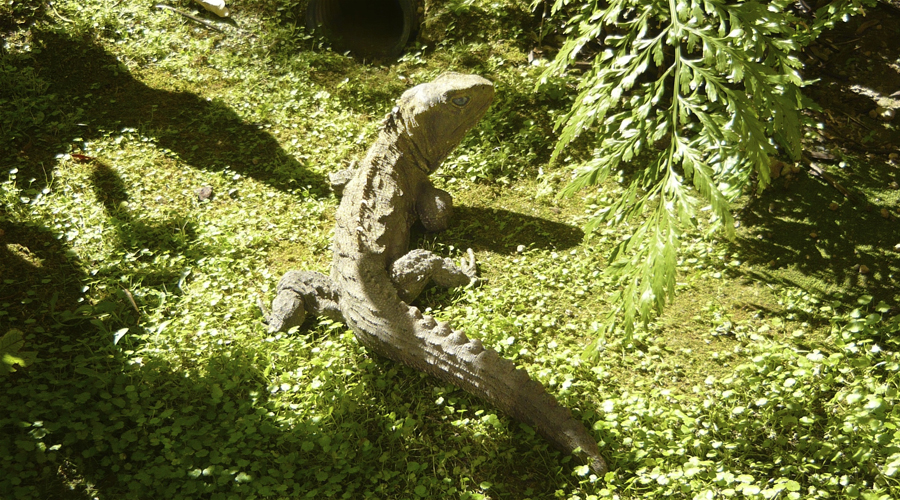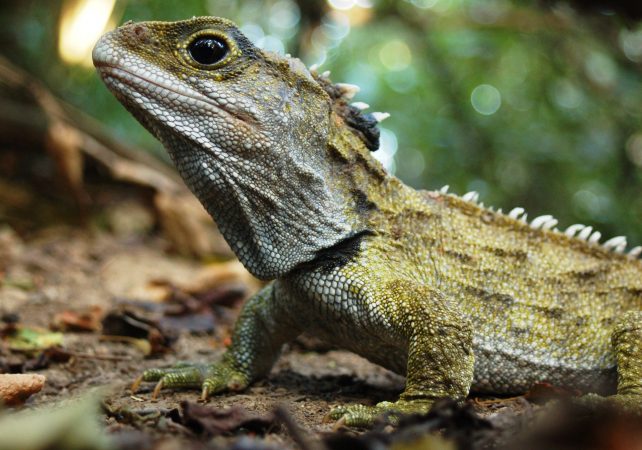Explainer: How invasive species ratted out the tuatara
Humans introduced rats to New Zealand, causing huge losses to native reptile populations

A male tuatara at Victoria University of Wellington, New Zealand. It’s not a lizard, although it looks like one. It is the last surviving member (since the time of the dinosaurs) of its order of reptiles.
Cristy Gelling
Today’s tuatara — a lizard-like reptile found only in New Zealand — face a major threat: the elimination of all females. Contributing to this threat is a climate that may be warming too fast for this species (Sphenodon punctatus) to adapt. But this is just the latest in a string of dangers the tuatara (TOO ah TAAR ah) have encountered. Indeed, their species has already survived an earlier risk of extinction brought about by the arrival of mammals.
For a long time, New Zealand had no land mammals other than bats. The island nation split away from other landmasses 80 million years ago. At that time, mammals were still evolving. So, for millions of years, ancestors of today’s tuatara evolved in isolation, with no mammals to threaten them. As a result, the squirrel-sized reptile never developed a defense against the sharp claws and teeth of predatory mammals.
Then, around 700 years ago, people from other parts of the Pacific started moving to New Zealand. With them came rats. Eventually, Europeans arrived with other mammals, including cats, dogs, pigs and stoats. Hitchhiking on their ships: more rats.

Today, tuatara no longer live on the two islands that make up mainland New Zealand, other than in a few nature reserves. There, fences keep predators out.
In the wild, tuatara continue to survive on a few small islands off of New Zealand’s mainland. These are small isles where no mammals have yet invaded. And in the safety of these isolated tiny islands, tuatara can thrive.
On one island, there are at least 30,000 of these reptiles, notes Nicola Nelson. She is a biologist at Victoria University of Wellington, New Zealand. “You have to watch where you put your feet sometimes,” she says, “because the tuatara don’t always get out of the way.”
Power Words
defense (in biology) A natural protective action taken or chemical response that occurs when a species confront predators or agents that might harm it. (adj. defensive)
evolve To change gradually over generations, or a long period of time. In living organisms, the evolution usually involves random changes to genes that will then be passed along to an individual’s offspring. These can lead to new traits, such as altered coloration, new susceptibility to disease or protection from it, or different shaped features (such as legs, antennae, toes or internal organs).
invasive species (also known as aliens) A species that is found living, and often thriving, in an ecosystem other than the one in which it evolved. Some invasive species were deliberately introduced to an environment, such as a prized flower, tree or shrub. Some entered an environment unintentionally, such as a fungus whose spores traveled between continents on the winds. Still others may have escaped from a controlled environment, such as an aquarium or laboratory, and begun growing in the wild. What all of these so-called invasives have in common is that their populations are becoming established in a new environment, often in the absence of natural factors that would control their spread. Invasive species can be plants, animals or disease-causing pathogens. Many have the potential to cause harm to wildlife, people or to a region’s economy.
landmass A continent, large island or other continuous body of land.
mammal A warm-blooded animal distinguished by the possession of hair or fur, the secretion of milk by females for feeding the young, and (typically) the bearing of live young.
New Zealand An island nation in the southwest Pacific Ocean, roughly 1,500 kilometers (some 900 miles) east of Australia. Its “mainland” — consisting of a North and South Island — is quite volcanically active. In addition, the country includes many far smaller offshore islands.
Pacific An adjective that refers to things found of or near the Pacific Ocean.
predator A creature that preys on other animals for most or all of its food.
stoat A small carnivorous mammal of the weasel family.
tuatara A reptile native to New Zealand. The tuatara (Sphenodon punctatus) are the sole remaining species of one of the four orders of reptiles. Their name is pronounced TOO-ah-TAAR-ah.







